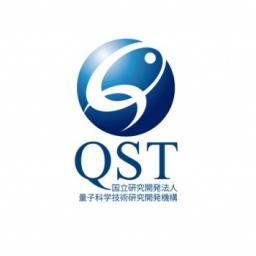 |
by staff on (#3J6N2)
Today Cray announced that the National Institutes for Quantum and Radiological Science and Technology (QST) selected a Cray XC50 supercomputer to be its new flagship supercomputing system. "The new system is expected to deliver peak performance of over 4 petaflops, an increase of more than 2 times the system it is replacing.The speed and integrated software environment of the Cray XC50 will enhance QST’s infrastructure and allow researchers to speed time to discovery.â€The post Cray to Build 4 Petaflop Supercomputer for Fusion Research at QST in Japan appeared first on insideHPC.
|
 Inside HPC & AI News | High-Performance Computing & Artificial Intelligence
Inside HPC & AI News | High-Performance Computing & Artificial Intelligence
| Link | https://insidehpc.com/ |
| Feed | http://insidehpc.com/feed/ |
| Updated | 2025-12-14 13:31 |
 |
by staff on (#3J5T0)
Today the UC San Diego Center for Microbiome Innovation (CMI) announced that Panasas has joined CMI’s Corporate Member Board and has donated a 500TB Panasas ActiveStor high-performance storage solution to support the acceleration of microbiome research. ActiveStor drives productivity and accelerates time to results with ultrafast streaming performance, true linear scalability, enterprise-grade reliability and unparalleled ease of management. "We are grateful for the support of Panasas,†said Center Faculty Director Rob Knight. “The advanced ActiveStor data storage solution we now have at our disposal will greatly enhance the activities of the Center.â€The post Panasas Donates 500 TB ActiveStore Solution to CMI Center for Microbiome Innovation appeared first on insideHPC.
|
 |
by Rich Brueckner on (#3J5PX)
In this video, European officials and research scientists discuss why high performance computing is a vital component of the technologies that touch our daily lives. "I'm very pleased to see that Europe has realized that high performance computing is a cornerstone to science," said Ben Bennet from HPE. "The days of hypothesis, conjecture, experiment are long gone, as there are things you can't experiment with."The post Video: Europe’s Future in HPC appeared first on insideHPC.
|
 |
by Rich Brueckner on (#3J5EJ)
The INFOCOMP 2018 Conference in Barcelona has issued its Call for Papers. The event takes place July 22-26 in Barcelona, Spain. "INFOCOMP 2018 continues a series of events dedicated to advanced communications and computing aspects, covering academic and industrial achievements and visions."The post Call for Papers: INFOCOMP 2018 in Barcelona appeared first on insideHPC.
|
 |
by Rich Brueckner on (#3J5B9)
Josh Romero from NVIDIA gave this talk at the Stanford HPC Conference. "In this session, we intend to provide guidance and techniques for porting scientific research codes to NVIDIA GPUs using CUDA Fortran. The GPU porting effort of an incompressible fluid dynamics solver using the immersed boundary method will be described. Several examples from this program will be used to illustrate available features in CUDA Fortran, from simple directive-based programming using CUF kernels to lower level programming using CUDA kernels."The post Porting Scientific Research Codes to GPUs with CUDA Fortran appeared first on insideHPC.
|
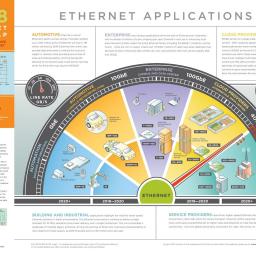 |
by staff on (#3J2GN)
Today the Ethernet Alliance announced its new 2018 Ethernet Roadmap. The roadmap traces Ethernet’s path from 10 Mb/s through present-day speeds of 1 to 400GbE, and looks ahead to future speeds achieving up to 1.6 terabits (TbE) and beyond. The forward-looking map also provides guidance into key underlying technologies, current and future interfaces, and the numerous application spaces where Ethernet plays a fundamental role.The post New 2018 Ethernet Roadmap Looks to Future Speeds of 1.6 Terabits/s appeared first on insideHPC.
|
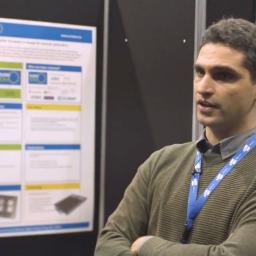 |
by Rich Brueckner on (#3J2AF)
In this video, Georgios Goumas the University of Athens describes how the EuroEXA project is working to develop the exascale computers in Europe. "To accomplish this, the project takes a holistic approach innovating both across the technology and the application/system software pillars. EuroEXA proposes a balanced architecture for compute and data-intensive applications, that builds on top of cost-efficient, modular-integration enabled by novel inter-die links, utilises a novel processing unit and embraces FPGA acceleration for computational, networking and storage operations."The post Video: How EuroEXA is Paving the Way to Exascale appeared first on insideHPC.
|
 |
by staff on (#3J2AH)
Microsoft Azure customers worldwide now gain access to Alces Flight to take advantage of the scalability, reliability and agility of Azure. With Alces Flight, it is possible for researchers to spin up any size of High-Performance Computing cluster in minutes, providing users with a fully-featured HPC environment that includes thousands of open source applications.The post Alces Flight: On Demand HPC now Available in the Azure Marketplace appeared first on insideHPC.
|
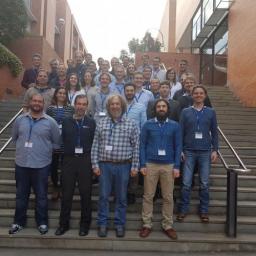 |
by Rich Brueckner on (#3J26Z)
A new European project aims to overcome the energy efficiency challenges of heterogeneous computing architectures by developing a new software stack. "Moore´s Law is slowing down, and as consequence hardware is becoming more heterogeneous. In the LEGaTO project, we will leverage task-based programming models to provide a software ecosystem for Made-in-Europe heterogeneous hardware composed of CPUs, GPUs, FPGAs and dataflow engines. Our aim is one order of magnitude energy savings from the edge to the converged cloud/high-performance computing."The post European LEGaTO Project aims to Develop Software for Energy Efficient Computing appeared first on insideHPC.
|
 |
by Rich Brueckner on (#3HZJP)
The 2018 FLOW-3D Americas Users Conference has announced their Call for Abstracts. Featuring customer presentations on validations, benchmarks, and case studies, the event takes place August 7-8 at the Warwick Hotel in Denver, CO. "The call for abstracts is now open. Share your experiences, present your success stories and obtain valuable feedback from your fellow FLOW-3D users and our technical staff. Abstracts should include a title, author and a 200 word description."The post Call for Abstracts: FLOW-3D Users Conference in Denver appeared first on insideHPC.
|
 |
by Rich Brueckner on (#3HZ9R)
In this podcast from from SXSW 2018, Antia Lamas-Linares from TACC moderates a panel discussion on quantum computing. "Imagine a new kind of computer that can quickly solve problems that would stump even the world's most powerful supercomputers. Quantum computers are fundamentally different. They can store information as not only just ones and zeros, but in all the shades of gray in-between. Several companies and government agencies are investing billions of dollars in the field of quantum information. But what will quantum computers be used for?"The post SXSW Podcast: Quantum Computing – Science Fiction to Science Fact appeared first on insideHPC.
|
 |
by staff on (#3HZ3D)
Today ISC 2018 announced that Maria Girone from CERN openlab will keynote the conference on Monday, June 25. “I will discuss some of the approaches we are considering to grapple with these enormous data requirements, including deploying resources through using commercial clouds, and employing new techniques, such as alternative computing architectures, advanced data analytics, and deep learning,†explains Girone. “Finally, I will present some medical applications resulting from the research at CERN.â€The post Maria Girone from CERN openlab to Keynote ISC 2018 appeared first on insideHPC.
|
 |
by Rich Brueckner on (#3HZ0Y)
In this podcast, the Radio Free HPC team looks at the big three technologies of the day on the Hype curve. "This week Google unveiled their 72-Qbit Bristlecone Quantum Chip, which they claim has them on the road to Quantum Supremacy. At the same time, quantum seems to be going mainstream, as evidenced by a session this week at SXSW."The post Radio Free HPC looks at the Quest for Quantum Supremacy appeared first on insideHPC.
|
 |
by staff on (#3HYY7)
Today Xilinx announced the FPGA industry’s first demonstration of breakthrough 112G PAM4 electrical signaling technology for optical networks, as well as announcing the addition of 58G PAM4 transceivers to its 16nm Virtex UltraScale+ portfolio. "Xilinx has a long history of driving standards efforts and pushing performance limits in serial interconnect technology, and continues to do so with the industry’s first 112G PAM4 demo as well as with its 58G PAM4 solution, here today for customers to begin designing in with,†said Karl Freund, senior analyst, HPC and machine learning, Moor Insights & Strategy. “Today’s Xilinx announcements represent a significant leap forward for network architects who continue to be challenged to improve bandwidth performance of their optical networks.â€The post Xilinx Demonstrates Breakthrough Optical Networking on the road to 7 nm appeared first on insideHPC.
|
 |
by staff on (#3HX1E)
Over at the NVIDIA Blog, Tonie Hansen writes that Princeton researchers are using deep learning to help establish the feasibility of delivering fusion energy in the foreseeable future. "The Princeton team has scaled up the capabilities of its FRNN software using thousands of GPUs to train deep neural networks. After successfully running on 6,000 Tesla K20 GPUs on Oak Ridge National Laboratory’s Titan supercomputer, FRNN has recently demonstrated the ability to scale to 3,000 NVIDIA Tesla P100 GPUs on Japan’s new TSUBAME-3 supercomputer at the Tokyo Institute of Technology."The post Princeton Team using Deep Learning to develop Fusion Energy appeared first on insideHPC.
|
 |
by Rich Brueckner on (#3HWZF)
Hector Cruz from UCLV gave this talk at FOSDEM'17. "To offer supercomputing services to all Cuban institutes of higher education, research centers and industrial partners is the mission set forth by a group of ambitious young system administrators working at various universities of the lush Caribbean island of Cuba. "Thus was born "HPC Cuba" the national center for academic supercomputing. While fully depending on Free Software for their operations, HPC Cuba has also joined the global Free Software community by producing installation packages for software not yet covered by EasyBuild."The post Video: The Birth of HPC Cuba appeared first on insideHPC.
|
 |
by Rich Brueckner on (#3HTZQ)
In this video, Colleen Heinemann, a Ph.D. student with the University of Illinois, describes how visualization makes scientific data more accessible and useful by transforming it into virtual objects you can see, touch and manipulate in 3-D space. "My research interest is in the cross section between High Performance Computing and scientific visualization. I am interested in not only presenting scientific data in an interesting way, but also in how High Performance Computing can be used to optimize the visualization process."The post Transforming Scientific Data into Immersive Visualizations appeared first on insideHPC.
|
 |
by Rich Brueckner on (#3HTXR)
Virginia Tech is seeking a Computer Science Software Scientist in our Job of the Week. "The Molecular Sciences Software Institute (MolSSI) located at Virginia Tech seeks candidates for multiple software scientist positions in the areas of computer science and software engineering. The successful candidates will be actively involved in an interdisciplinary team who will help design and develop software frameworks that will deliver new scientific advances in molecular sciences."The post Job of the Week: Computer Science Software Scientist at Virginia Tech appeared first on insideHPC.
|
 |
by staff on (#3HRM3)
Today PASC18 announced that this year’s Public Lecture will be held by David Bader from Georgia Tech. Dr. Bader will speak on Massive-Scale Analytics Applied to Real-World Problems. "Emerging real-world graph problems include: detecting and preventing disease in human populations; revealing community structure in large social networks; and improving the resilience of the electric power grid. Unlike traditional applications in computational science and engineering, solving these social problems at scale often raises new challenges because of the sparsity and lack of locality in the data, the need for research on scalable algorithms and development of frameworks for solving these real-world problems on high performance computers, and for improved models that capture the noise and bias inherent in the torrential data streams. This talk will discuss the opportunities and challenges in massive data-intensive computing for applications in social sciences, physical sciences, and engineering."The post David Bader from Georgia Tech Joins PASC18 Speaker Lineup appeared first on insideHPC.
|
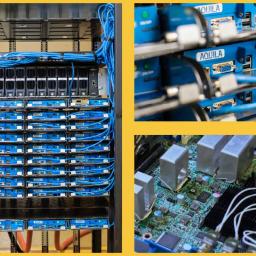 |
by staff on (#3HRH7)
Today Aquila announced delivery and installation of the first ever fixed cold plate liquid cooled Aquarius HPC system. Sandia National Laboratories has deployed the system at the NREL in order to fully study the benefits of Aquila’s fixed cold plate warm water cooling technology. "We feel their leadership will help shape the future of HPC and influence the modern data center designer towards adoption of liquid cooling. Our shared vision holds the promise of improving data center energy efficiency by as much as 50%.â€The post Video: NREL Evaluates Aquarius Liquid Cooling Technology for HPC appeared first on insideHPC.
|
 |
by staff on (#3HRE3)
In this TACC Podcast, Antia Lamas-Linares of the Texas Advanced Computing Center gives us a preview of her session on Quantum Computing at the SXSW conference. "Imagine a new kind of computer that can quickly solve problems that would stump even the world's most powerful supercomputers. Quantum computers are fundamentally different. They can store information as not only just ones and zeros, but in all the shades of gray in-between. Several companies and government agencies are investing billions of dollars in the field of quantum information. But what will quantum computers be used for?"The post TACC Podcast Previews SXSW Session on Quantum Computing appeared first on insideHPC.
|
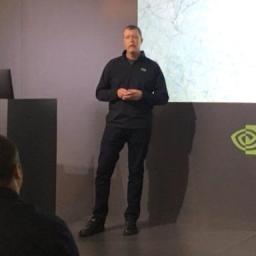 |
by Rich Brueckner on (#3HR8D)
Doug Miles from NVIDIA gave this talk at the Stanford HPC Conference. "This talk will include an introduction to the OpenACC programming model, provide examples of its use in a number of production applications, explain how OpenACC and CUDA Unified Memory working together can dramatically simplify GPU programming, and close with a few thoughts on OpenACC future directions."The post Accelerating HPC Applications on NVIDIA GPUs with OpenACC appeared first on insideHPC.
|
 |
by staff on (#3HNQJ)
In this Let's Talk Exascale podcast, Tim Germann from Los Alamos National Laboratory discusses the ECP’s Co-Design Center for Particle Applications (COPA). "COPA serves as centralized clearinghouse for particle-based methods, and as first users on immature simulators, emulators, and prototype hardware. Deliverables include 'Numerical Recipes for Particles' best practices, libraries, and a scalable open exascale software platform."The post Let’s Talk Exascale Podcast Looks at Co-Design Center for Particle-Based Applications appeared first on insideHPC.
|
 |
by staff on (#3HNN3)
Today Mellanox announced the release of Mellanox Onyx – the industry-leading open and flexible Ethernet Network Operating System for Mellanox Spectrum Open Ethernet switches. “Mellanox Onyx offers a mature Layer-3 feature-set, with integrated support for standard Devops tools, allowing customers to run third party containerized applications with complete SDK access. By utilizing Mellanox Onyx’s leading capabilities, our customers can enjoy the benefits of an industry-standard Layer-2 and Layer3 feature-set along with the ability to customize and optimize the network to their specific needs.â€The post New Mellanox Onyx Ethernet Network Operating System boosts Devops appeared first on insideHPC.
|
 |
by Rich Brueckner on (#3HNEV)
The HPC Advisory Council has posted their meeting agenda for their Swiss Conference. Held in conjunction with HPCXXL, the event takes place April 9-12 in Lugano, Switzerland. "Delve into a wide range of interests, disciplines and topics in HPC – from present day application to its future potential. Join the Centro Svizzero di Calcolo Scientifico (CSCS), HPC Advisory Council members and colleagues from around the world for invited and contributed talks and immersive tutorials at the ninth annual Swiss Conference! Knowledgeable evaluations, prescriptive best practices and provocative insights, the open forum conference brings together industry experts for three days of highly interactive sessions."The post Preliminary Agenda Posted for HPC Advisory Council Swiss Conference appeared first on insideHPC.
|
 |
by Rich Brueckner on (#3HNBG)
Adam Huffman from the Francis Crick Institute gave this talk at FOSDEM'17. "We will present experiences of supporting HPC/HTC workloads on private cloud resources, with ideas for how to do this better and description of trends for non-traditionalHPC resource provision. I will discuss my work as part of the Operations Team for the eMedLab private cloud, which is a large-scale (6000-core, 5PB)biomedical research cloud using HPC hardware, aiming to support HPC workloads."The post Video: The Marriage of Cloud, HPC and Containers appeared first on insideHPC.
|
 |
by Richard Friedman on (#3HN93)
The automated driving developer community typically uses Eigen*, a C++ math library, for the matrix operations required by the Extended Kalman Filter algorithm. EKF usually involves many small matrices. However most HPC library routines for matrix operations are optimized for large matrices. "Intel MKL provides highly-tuned xGEMM function for matrix-matrix multiplication, with special paths for small matrices. Eigen can take advantage of Intel MKL through use of a compiler flag. A significant speedup results when using Eigen and Intel MKL and compiling the automated driving apps with the latest Intel C++ compiler."The post Intel MKL Speeds Up Automated Driving Workloads on the Intel Xeon Processor appeared first on insideHPC.
|
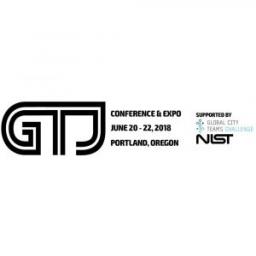 |
by Rich Brueckner on (#3HJHW)
The Global Tech Jam conference on Smart Cities has issued its Call for Papers. The event takes place June 20-22 in Portland, Oregon. "In collaboration with the Association for Computing Machinery (ACM) Emerging Interest Group (EIG) on Smart Cities and Communities (SCC), we will be hosting a Technical Papers Symposium as part of Tech Jam. This symposium will provide a leading venue for the presentation of the highest-quality original research, groundbreaking ideas, and compelling insights on future trends in Smart City Technology and Deployment. Please see the call for papers athttps://easychair.org/cfp/SCC2018. Accepted papers will be published in the ACM Digital Library as part of the event proceedings."The post Call for Papers: Global Tech Jam on Smart Cities in Portland appeared first on insideHPC.
|
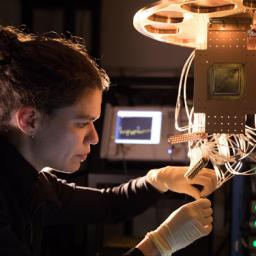 |
by staff on (#3HJHY)
Over at the Google Research Blog, Julian Kelly writes that the company has developed a new 72-Qbit quantum processor called Bristlecone. "We are cautiously optimistic that quantum supremacy can be achieved with Bristlecone, and feel that learning to build and operate devices at this level of performance is an exciting challenge!"The post Google Goes for Quantum Supremecy with 72-Qbit Bristlecone Chip appeared first on insideHPC.
|
 |
by staff on (#3HJHE)
NEC Deutschland GmbH has delivered an LX series supercomputer to Technische Universität Kaiserslautern (TUK), one of Germany's leading Universities of Technology. "The new HPC cluster consists of 324 compute nodes totaling nearly 7,800 cores of the latest-generation Intel Skylake CPUs, and comprises a highly optimized Intel Omni-Path Interconnect architecture for low-latency, high-bandwidth communication. Additional GPGPU compute nodes equipped with the latest NVIDIA VOLTA 100 GPUs contribute to a total peak performance of the HPC cluster at approximately 700 Teraflops."The post TUK in Germany installs NEC LX Supercomputer with Intel Omni-Path appeared first on insideHPC.
|
 |
by Rich Brueckner on (#3HJHG)
Chris Fregly from PipelineAI gave this talk at the Stanford HPC Conference. "Applying my Netflix experience to a real-world problem in the ML and AI world, I will demonstrate a full-featured, open-source, end-to-end TensorFlow Model Training and Deployment System using the latest advancements with TensorFlow, Kubernetes, OpenFaaS, GPUs, and PipelineAI."The post Deploy Serverless TensorFlow Models using Kubernetes, OpenFaaS, GPUs and PipelineAI appeared first on insideHPC.
|
 |
by staff on (#3HJEP)
Today Bright Computing announced it has joined the Linux Foundation and will participate in the OpenHPC Community project. "Many of our HPC customers incorporate both commercial and open source management regimens on clusters based on Intel Xeon Scalable processors,†said Trish Damkroger, Vice President and General Manager, Technical Computing Initiative at Intel Corporation. “By supporting OpenHPC packages in their software, Bright Computing will help enable HPC practitioners assemble the ideal management framework for their needs.â€The post Bright Computing adds support for OpenHPC appeared first on insideHPC.
|
 |
by staff on (#3HFZC)
Today Cornell University announced that four new Cornell Virtual Workshop training topics are available at the Extreme Science and Engineering Discovery Environment (XSEDE) user portal. "The Cornell University Center for Advanced Computing (CAC) is a leader in the development and deployment of Web-based training programs designed to enhance the computational skills of researchers, broaden the participation of underrepresented groups in the sciences and engineering, and accelerate the adoption of new and emerging technologies."The post XSEDE offers free HPC Training from Cornell Virtual Workshop appeared first on insideHPC.
|
 |
by Rich Brueckner on (#3HFSB)
The iRODS User Group Meeting has issued their Call for Proposals. Registration is now open for the event, which takes place June 5-7 in Durham, NC. "The meeting gives iRODS users and those interested in using iRODS the chance to learn about the latest updates to iRODS software, hear about iRODS implementations from users in different research domains and business sectors, discuss iRODS-enabled applications and discoveries, and glimpse the future of iRODS and the iRODS Consortium."The post Call for Proposals: iRODS User Group Meeting in Durham appeared first on insideHPC.
|
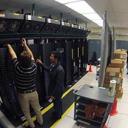 |
by staff on (#3HFNY)
The project connecting the UC Santa Cruz’s Hyades supercomputer to LBNL is being awarded the CENIC 2018 Innovations in Networking Award for Research Applications. "To accelerate the rate of scientific discovery, researchers must get the data they need, where they need it, and when they need it,†said UC San Diego computer science and engineering professor Larry Smarr, Principal Investigator of the PRP and director of Calit2. “This requires a high-performance data freeway system in which we use optical lightpaths to connect data generators and users of that data.â€The post High Speed Connection to Hyades Supercomputer wins CENIC Innovation Award appeared first on insideHPC.
|
 |
by staff on (#3HFP0)
Richard Childress Racing (RCR) is hoping to improve racing times through a multi-year partnership with ANSYS. RCR will use ANSYS Pervasive Engineering Simulation software to more accurately predict machine performance and enhance vehicle speed on the race track. "Using ANSYS Pervasive Engineering Simulation throughout the entire racecar lifecycle, RCR will race faster, safer and more aerodynamic vehicles."The post RCR uses Simulation to Accelerate Racecar Development appeared first on insideHPC.
|
 |
by Rich Brueckner on (#3HFF8)
In this video, Sandia engineers provide a behind-the-scenes look at the lab's efforts centered around High Performance Computing. "The Sandia team supports researchers who solve critical national and global problems - a challenging job with high impact results.Our unique mission responsibilities in the nuclear weapons program create a foundation from which we leverage capabilities, enabling us to solve complex national security problems."The post Behind the Scenes – HPC at Sandia appeared first on insideHPC.
|
 |
by Rich Brueckner on (#3HCYY)
The PEARC18 Conference has added Anita Nikolich from IIT to its lineup of Keynote Speakers. Her talk on Hacking Academia will certainly resonate with the conference, which takes place July 22-27 in Pittsburgh.The post Anita Nikolich to Keynote PEARC18 in Pittsburgh appeared first on insideHPC.
|
 |
by staff on (#3HCVY)
Today Lenovo unveiled the addition of 1,500 ultra-dense Lenovo ThinkSystem SD530 high-performance compute nodes for Niagara – Canada’s most-powerful research supercomputer. As the demand for high performance computing in quantitative research increases rapidly, the 4.6 Petaflop supercomputer will help Canadian researchers achieve meaningful results in artificial intelligence, astrophysics, climate change, oceanic research and other disciplines using big data.The post Lenovo’s Niagara Cluster Upgrade makes it Fastest Supercomputer in Canada appeared first on insideHPC.
|
 |
by staff on (#3GSWA)
To help prospective customers understand Intel OPA capabilities and inform new customers of how to take advantage of all that Intel OPA has to offer, Intel began presenting a series of webinars on the fabric nearly three years ago. This guest post explores Intel's advanced webinar series that focuses on understanding HPC fabrics and Intel Omni-Path Architecture.The post Intel’s Advanced Webinar Series for Understanding HPC Fabrics and Intel Omni-Path Architecture appeared first on insideHPC.
|
 |
by Rich Brueckner on (#3HCRT)
In this podcast, the Radio Free HPC team looks at the European Processor Initiative, an effort to design a build an exascale computer based around European technology. "According to an interview in Primeur Magazine with EPI project coordinator Philippe Notton from Atos, the project involves not only a processor, but an accelerator as well. Will it be based on ARM, OpenPOWER, or something else like RISC-V? We will have to wait and see."The post Radio Free HPC Looks at the European Processor Initiative appeared first on insideHPC.
|
 |
by staff on (#3HCP5)
Queen Mary University of London and Newcastle University are the first UK academic institutions to install POWER9 systems. Deployed by OCF, both Universities have already integrated the machines into their existing HPC infrastructures. "Modern AI, HPC and Analytics workloads are driving an ever-growing set of data intensive challenges,†comments Julian Fielden, Managing Director of OCF. “These challenges can only be met with accelerated infrastructure, such as IBM’s POWER9. In such a highly competitive field as academic research, providing superior HPC services to compute large quantities of data quickly, can help to attract world-class researchers, as well as grants and funding.â€The post OCF deploys first IBM POWER9 systems in UK Academia appeared first on insideHPC.
|
 |
by Rich Brueckner on (#3HCP7)
Damian Rouson from the Sourcery Institute gave this talk at the Stanford HPC Conference. "This talk will present performance and scalability results of the mini-app running on several platforms using up to 98,000 cores. A second application involves the use of teams of images (processes) that execute indecently for ensembles of computational hydrology simulations using WRF-Hyrdro, the hydrological component of the Weather Research Forecasting model also developed at NCAR. Early experiences with portability and programmability of Fortran 2018 will also be discussed."The post First Experiences with Parallel Application Development in Fortran 2018 appeared first on insideHPC.
|
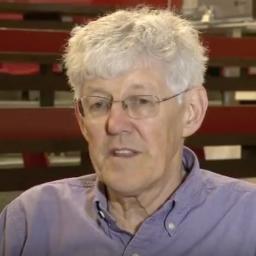 |
by Rich Brueckner on (#3HAK5)
Les Cottrell from SLAC gave this talk at the Stanford HPC Conference. "Scientists use LCLS to take crisp pictures of atomic motions, watch chemical reactions unfold, probe the properties of materials and explore fundamental processes in living things. The talk will introduce LCLS and LCLS-II with a short video, discuss its data reduction, collection, data transfer needs and current progress in meeting these needs."The post Linac Coherent Laser Source (LCLS-II): Data Transfer Requirements appeared first on insideHPC.
|
 |
by Rich Brueckner on (#3HAFY)
NVIDIA will host thousands of the world’s leading AI experts at its ninth annual GPU Technology Conference (GTC) on March 26-29 in San Jose, California. "GTC is where the world’s leading researchers and business leaders learn how to harness the power of AI,†said Greg Estes, vice president of Developer Programs at NVIDIA. “As GPU computing continues to drive the AI revolution, GTC is where you’ll see the future take shape.â€The post GPU Technology Conference Returns to San Jose March 26-29 appeared first on insideHPC.
|
 |
by Rich Brueckner on (#3G8JG)
In this podcast, the Radio Free HPC team looks at the tradeoff between chip performance and security. In the aftermath of the recently disclosed Spectre and Meltdown exploits, Cryptograpy guru Paul Kocher from Rambus is calling for a divergence in processor architectures:The post Radio Free HPC Looks at Diverging Chip Architectures in the Wake of Spectre and Meltdown appeared first on insideHPC.
|
 |
by Rich Brueckner on (#3H8QK)
Shahin Khan from OrionX gave this talk at the Stanford HPC Conference. "We will review OrionX's predictions for 2018, the technologies that are changing the world (Iot, Blockchain, Quantum Computing, AI ...) and how HPC will be the engine that drives it."The post Outlook on Hot Technologies appeared first on insideHPC.
|
 |
by Rich Brueckner on (#3H8KX)
The Michigan State University Institute for Cyber Enabled Research is seeking a Senior Linux System Administrator/Information Technologist in our Job of the Week. "The Information Technologist II will develop, support and optimize systems and processes for the management and automation of High Performance Computing systems. Duties include: support and optimize data storage systems, including capacity planning and disaster recovery planning; security in particular network security and data security appropriate for research projects; ability to work with Firewall configuration and rules; experience with virtual machine implementations such as Docker and Singularity containers; participate in the development of facilities to support High Performance Computing systems on campus."The post Job of the Week: Senior Linux System Administrator at Michigan State University appeared first on insideHPC.
|
 |
by staff on (#3H721)
Paul Messina has been selected as the 2018 recipient of the CRA Distinguished Service Award for his significant contributions to the advancement of high performance computing and decades of service to the field. Messina has an incredible record of building and managing large-scale, diverse research activities. Over the course of his career, he has designed, directed, and otherwise executed numerous initiatives that have influenced U.S. policy and programs resulting in the U.S. leadership position in high-performance computing.The post Paul Messina Receives 2018 CRA Distinguished Service Award appeared first on insideHPC.
|
 |
by Rich Brueckner on (#3H694)
Getting young people interested in STEM careers is a big concern for the HPC community. Maybe what we really need is a superhero. "A new mascot at the Barcelona Supercomputing Center (BSC) has the mission to bring supercomputers closer to young people and stimulate their interest in science and technology."The post BSC Adopts Supergeek Mascot to get kids into Supercomputing appeared first on insideHPC.
|